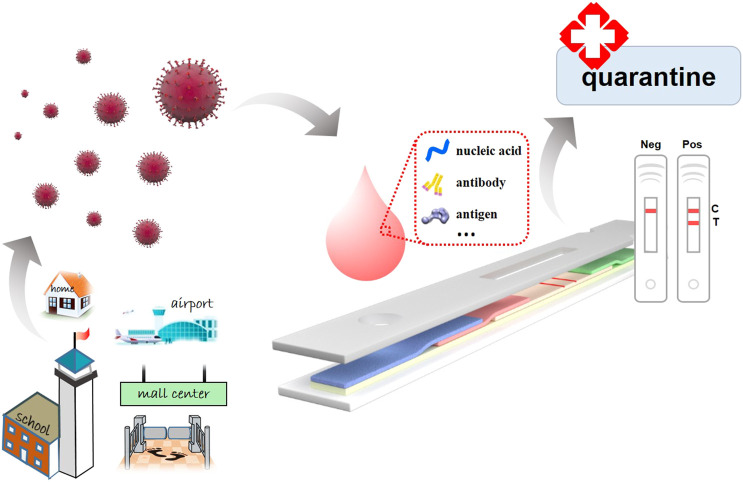- Record: found
- Abstract: found
- Article: found
Recent Progress on Rapid Lateral Flow Assay-Based Early Diagnosis of COVID-19

Read this article at
Abstract
The outbreak of the coronavirus disease 2019 (COVID-19) has resulted in enormous losses worldwide. Through effective control measures and vaccination, prevention and curbing have proven significantly effective; however, the disease has still not been eliminated. Therefore, it is necessary to develop a simple, convenient, and rapid detection strategy for controlling disease recurrence and transmission. Taking advantage of their low-cost and simple operation, point-of-care test (POCT) kits for COVID-19 based on the lateral flow assay (LFA) chemistry have become one of the most convenient and widely used screening tools for pathogens in hospitals and at home. In this review, we introduce essential features of the severe acute respiratory syndrome coronavirus 2 (SARS-CoV-2) virus, compare existing detection methods, and focus on the principles, merits and limitations of the LFAs based on viral nucleic acids, antigens, and corresponding antibodies. A systematic comparison was realized through summarization and analyses, providing a comprehensive demonstration of the LFA technology and insights into preventing and curbing the COVID-19 pandemic.
Graphical Abstract
Viral RNA‐, antibody‐, antigen-Based LFAs are used for large-scale screening of COVID‐19 at home, school, and under various non-laboratory scenarios.

Related collections
Most cited references169
- Record: found
- Abstract: found
- Article: not found
A Novel Coronavirus from Patients with Pneumonia in China, 2019

- Record: found
- Abstract: found
- Article: found
A pneumonia outbreak associated with a new coronavirus of probable bat origin
- Record: found
- Abstract: found
- Article: not found